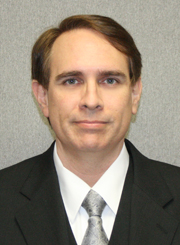
Abstract: Cache replacement and branch prediction are two important microarchitectural prediction techniques for improving performance. We propose a data-driven approach to designing microarchitectural predictors. Through simulation, we collect traces giving detailed control-flow and memory behavior. Then use stochastic search techniques, such as genetic algorithms, to find points in a large design space of predictors that yield good accuracy on the traces. We then evaluate the predictors on held-out data.
This talk will present two techniques resulting from this methodology. In Multiperspective Branch Prediction, many features and their parameters are tuned using a genetic algorithm to yield a very accurate perceptron-based branch predictor. Multiperspective Reuse Prediction uses the same idea for cache management. Many features of memory accesses to predict the reuse of a given memory access. The features and their parameters are chosen by a stochastic search yielding a very accurate predictor. This predictor is applied to a placement, replacement, and bypass optimization that out-performs the state of the art.
Speakers
 Short Bio: Daniel A. Jiménez is a Professor in the Department of Computer Science and Engineering at Texas A&M University. He was previously Assistant and later Associate Professor in the Department of Computer Science at Rutgers University, and Professor and Chair of the Department of Computer Science at The University of Texas at San Antonio. Daniel received his doctorate in Computer Sciences from the University of Texas at Austin in 2002. He is interested in characterizing and exploiting the predictability of programs to improve microarchitecture. He pioneered the development of neural-inspired branch predictors, which have been implemented in microprocessors from AMD, Oracle, and Samsung. Daniel designed the neural branch predictor or the Samsung Exynos M1 which is used in the popular Samsung Galaxy S7. He is a Senior Member of the IEEE, an ACM Distinguished Scientist, and an NSF CAREER award winner. He was General Chair of IEEE HPCA in 2011 and Program Chair for IEEE HPCA in 2017.
Short Bio: Daniel A. Jiménez is a Professor in the Department of Computer Science and Engineering at Texas A&M University. He was previously Assistant and later Associate Professor in the Department of Computer Science at Rutgers University, and Professor and Chair of the Department of Computer Science at The University of Texas at San Antonio. Daniel received his doctorate in Computer Sciences from the University of Texas at Austin in 2002. He is interested in characterizing and exploiting the predictability of programs to improve microarchitecture. He pioneered the development of neural-inspired branch predictors, which have been implemented in microprocessors from AMD, Oracle, and Samsung. Daniel designed the neural branch predictor or the Samsung Exynos M1 which is used in the popular Samsung Galaxy S7. He is a Senior Member of the IEEE, an ACM Distinguished Scientist, and an NSF CAREER award winner. He was General Chair of IEEE HPCA in 2011 and Program Chair for IEEE HPCA in 2017.
